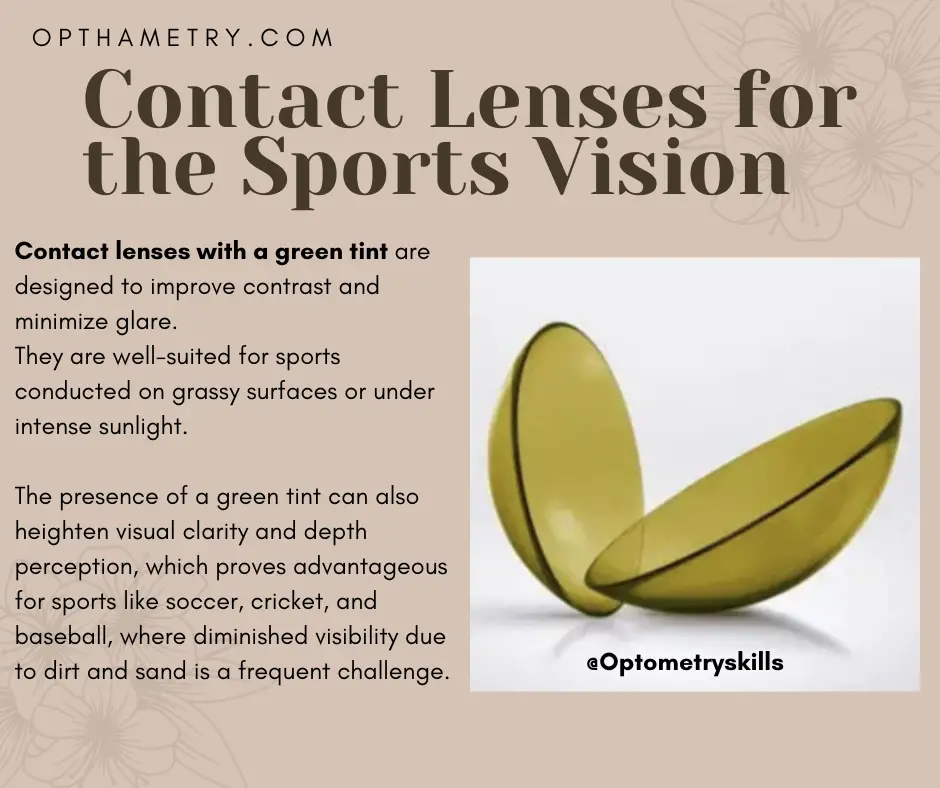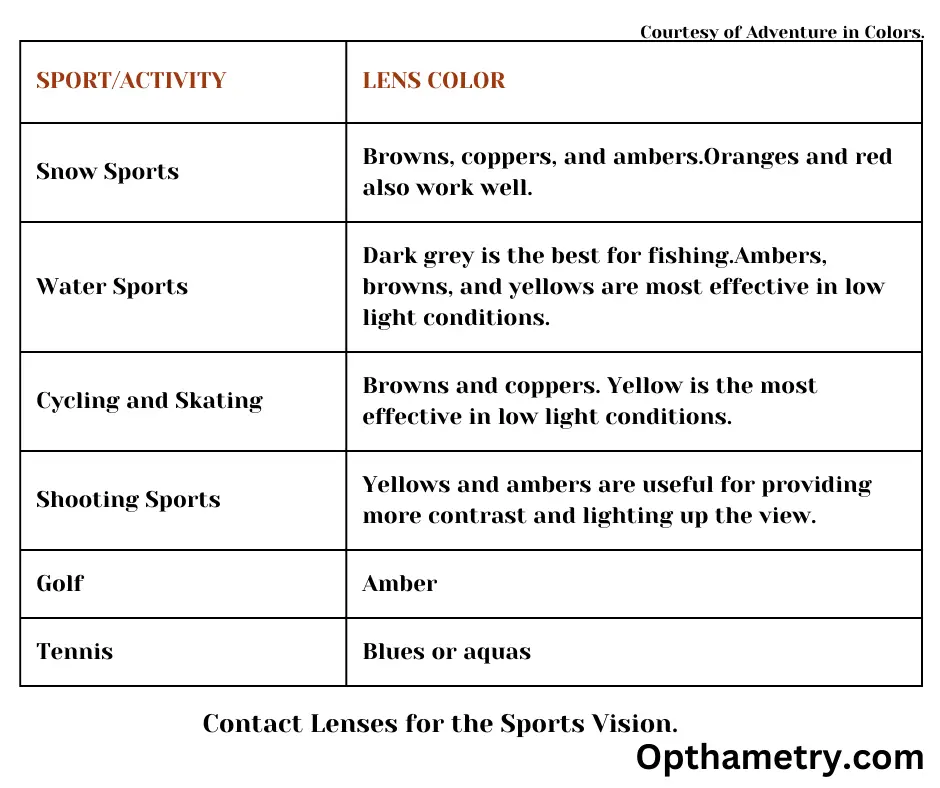Contact Lenses for Sports Vision
Contact lenses have become an essential tool for athletes, providing a competitive edge in various sports. They offer numerous advantages over eyeglasses, such as a wider field of view, unobstructed vision, and better compatibility with safety equipment.
Sports vision and Sports vision testing: How good the eyes of a Sportsman should be?

pic credit- CHEC
Contact lenses enhance sports performance in many ways:
- Better Peripheral Vision: Contact lenses offer a wider field of view than eyeglasses, increasing overall clarity and improving peripheral vision.
- Unobstructed Field of View: Unlike eyeglasses, contact lenses provide an unobstructed field of view, allowing athletes to react faster to objects and players around them1.
- Less Likelihood of Fogging Up or Getting Splattered: Contacts usually remain clear regardless of environment or weather conditions.
- Less Chance of Injury: Eyeglasses may break and cause an eye injury during a hard hit, but contact lenses won’t.
- More Stable Vision: Contact lenses provide more stable vision as they don’t move on your face with each stride.
- Better Compatibility with Safety Equipment: Contact lenses don’t interfere with the fit or comfort of safety devices like headgear or protective goggles.
The Use of Different Tints in Contact Lenses
Tinted contact lenses are designed to enhance vision in different lighting conditions and can be particularly useful in sports. The most popular tints for sports contacts are amber and gray-green. Amber lenses are often preferred for sports like baseball, tennis, and soccer, whereas gray-green lenses are recommended for sports like golf, running, and biking1.


types of tint in Contact Lenses for the Sports Vision

There are several types of tints available:
- Visibility Tint: This is a light blue or green tint added to a lens, just to help you see it better during insertion and removal, or if you drop it. Visibility tints are relatively faint and do not affect your eye color3.
- Enhancement Tint: This is a solid but translucent (see-through) tint that is a little darker than a visibility tint. An enhancement tint is meant to enhance the natural color of your eyes3.
- Opaque Tint: This is a non-transparent tint that can change your eye color completely. If you have dark eyes, you’ll need this type of color contact lens to change your eye color
Can ufc fighters wear contacts?
Different Contact Lenses for the Sports Vision
- Snow sports: For activities like skiing and snowboarding, where the environment is often snowy and bright, lens tints in browns, coppers, and ambers are recommended. These colors help enhance contrast in the snowy landscape. Oranges and reds can also be suitable options.
- Water sports: When engaging in water-based activities, especially fishing, dark gray lenses are ideal as they reduce glare from the water’s surface. In low light conditions, ambers, browns, and yellows become more effective to enhance visibility.
- Cycling and skating: For cycling and skating, browns and coppers are good choices, especially in normal lighting conditions. However, in low light conditions, yellow-tinted lenses can be more effective in improving visibility.
- Shooting sports: In shooting sports, yellow and amber lenses are recommended because they provide better contrast and help brighten the athlete’s view, making it easier to focus on the target.
- Golf: Ambers are suggested for golf, as they can help improve contrast and visibility in the golf course environment.
- Tennis: Blue or aqua tinted lenses are appropriate for tennis. These colors may help in reducing glare from the sun and improving visibility of the tennis ball during play.
The choice of lens tint depends on the specific requirements and lighting conditions of the sport or activity, and selecting the right tint can enhance an athlete’s performance and safety.
Reference:
- allaboutvision.com
- coopervision.com
- allaboutvision.com
- lenspure.com
- Adventureincolours
Follow us in Facebook
Discover more from An Eye Care Blog
Subscribe to get the latest posts sent to your email.


You must be logged in to post a comment.